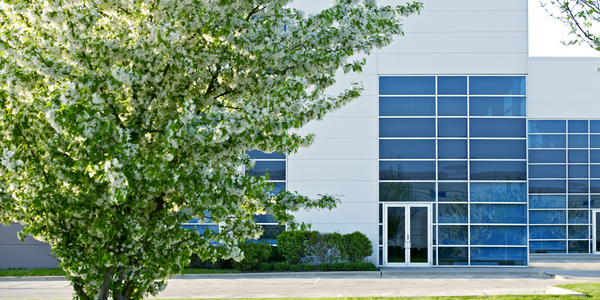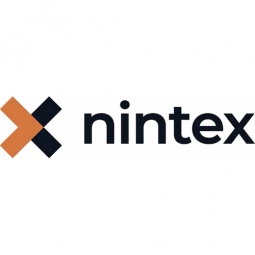Technology Category
- Functional Applications - Enterprise Resource Planning Systems (ERP)
Applicable Industries
- Cement
Applicable Functions
- Logistics & Transportation
- Product Research & Development
Use Cases
- Personnel Tracking & Monitoring
- Supply Chain Visibility
Services
- Cloud Planning, Design & Implementation Services
- System Integration
About The Customer
Twinings is a renowned tea company with a history dating back to 1706. The company still buys, brews, and sells tea with the same care that Thomas Twining took when he opened his business in the heart of London, beginning a love affair between the British public and the beverage that’s lasted more than 300 years. Today, Twinings is a global business with hundreds of suppliers and thousands of tea batches brewed annually. The company has a complex supply chain that includes material master records that support bills of materials. Twinings also manufactures the popular drink Ovaltine.
The Challenge
As Twinings’ global business continued to grow, the company found itself in need of a master data governance system and supplier portal to support its expansion. The traditional IT system Twinings used for Master Data Governance was increasingly out of sync with the company’s burgeoning needs. The system was time-consuming and fragmented, with an overreliance on emails and spreadsheets that made it difficult to maintain a single version of truth, let alone conduct audits. The company wanted to overcome these limitations and more. It aimed to both streamline and expand its solution with automated workflow, digital forms, and integration into its SAP ERP software. Twinings sought a low-cost and low-code solution that its business users could easily use on their own, providing them with more agility than they could get from software that had to be managed via IT staff.
The Solution
After an exhaustive, 18-month RFP process, Twinings chose Nintex K2 Cloud. The Nintex K2 Cloud workflow uses business and technical embedded rules to ensure the data is consistent and accurate before records are created or modified in SAP. The Master Data Governance suite at Twinings includes 20 applications. To develop them, Twinings contracted with Nintex Professional Services to build the first two applications. With that experience, they developed the remaining 16 applications themselves. After achieving success with the Master Data Governance solution, Twinings used Nintex K2 Cloud to replace an offline mix of emails and spreadsheets that was slow to onboard vendors, impeded communication between suppliers and Twinings buying staff, and didn’t provide that staff with visibility into supply chain status. The result was a Supplier Portal that provides an online, real-time way for suppliers and Twinings buyers to share information about purchase orders, shipment status, quality checks and more.
Operational Impact
Quantitative Benefit

Case Study missing?
Start adding your own!
Register with your work email and create a new case study profile for your business.
Related Case Studies.

Case Study
System 800xA at Indian Cement Plants
Chettinad Cement recognized that further efficiencies could be achieved in its cement manufacturing process. It looked to investing in comprehensive operational and control technologies to manage and derive productivity and energy efficiency gains from the assets on Line 2, their second plant in India.

Case Study
Digital Transformation of Atlanta Grout & Tile: An IoT Case Study
Atlanta Grout & Tile, a Tile, Stone & Grout restoration company based in Woodstock, Georgia, was facing challenges with its traditional business model. Despite steady growth over the years, the company was falling behind the web revolution and missing out on the opportunity to tap into a new consumer base. They were using independent software from different vendors for each of their department information and workforce management. This resulted in a lot of manual work on excel and the need to export/import data between different systems. This not only increased overhead costs but also slowed down their response to clients. The company also had to prepare numerous reports manually and lacked access to customer trends for effective business decision-making.

Case Study
Revolutionizing Construction Equipment Rental: A Case Study on ProsRent and ENO8
ProsRent, a startup that won the 'Best Financial Opportunity' and 'Best Pitch' at CodeLaunch 2016, aimed to revolutionize the way construction professionals source and rent heavy equipment. In the construction industry, project managers and contractors typically rent heavy equipment from supply companies. However, predicting inventory can be challenging, and finding the required equipment at the right time and place can be a hassle. If the preferred vendor doesn't have the required equipment, it results in wasted time and money in searching for it, often leading to higher costs due to non-preferred rates and increased delivery costs if the vendor is located far from the job site. Suppliers, on the other hand, desired access to a wider base of trusted renters that they didn't have to vet themselves and wanted to offer dynamic rental pricing based on demand and availability in their market. ProsRent's challenge was to produce a minimum viable product that was fast and first to market but also strong enough to engender loyalty and repeat business from the target market.

Case Study
AI-based Automation for Commercial Office HVAC: A Verdigris Case Study
Modern buildings are required to run longer hours, support a variety of end uses, and contribute to higher levels of economic productivity, leaving a thin margin for error. However, even the most advanced building and environmental control systems have failed to adequately support facilities and operations management. Buildings are often inefficient and the people using them are underserved. To meet occupant comfort and maintain cost and energy efficiency, a dynamic, AI-assisted approach is needed.

Case Study
Revamping EE's Legacy ERP: A Case Study on BT's Strategic Transformation
EE, even after its merger with BT, was operating its ERP estate on legacy infrastructure, hosted on the premises of a third-party supplier. This outdated system resulted in a volume-based operational model, higher time to market, longer delivery cycles, and unsatisfactory customer experience. BT recognized the need for a strategic transformation of these aging ERP systems and sought a partner who could proactively manage application services. The partner was also expected to handle development requirements associated with application management services, drive accountability, and ownership with a time and target-driven transformation of these services. BT's primary goals were to improve customer experience, reduce cycle time, and measure these improvements with precision.








